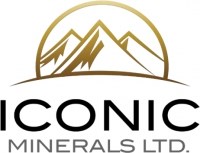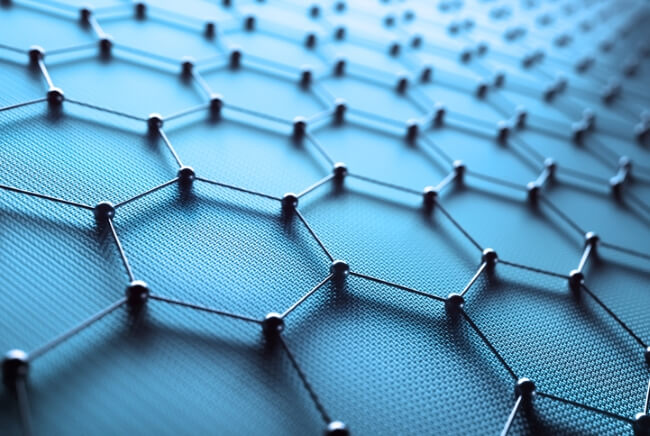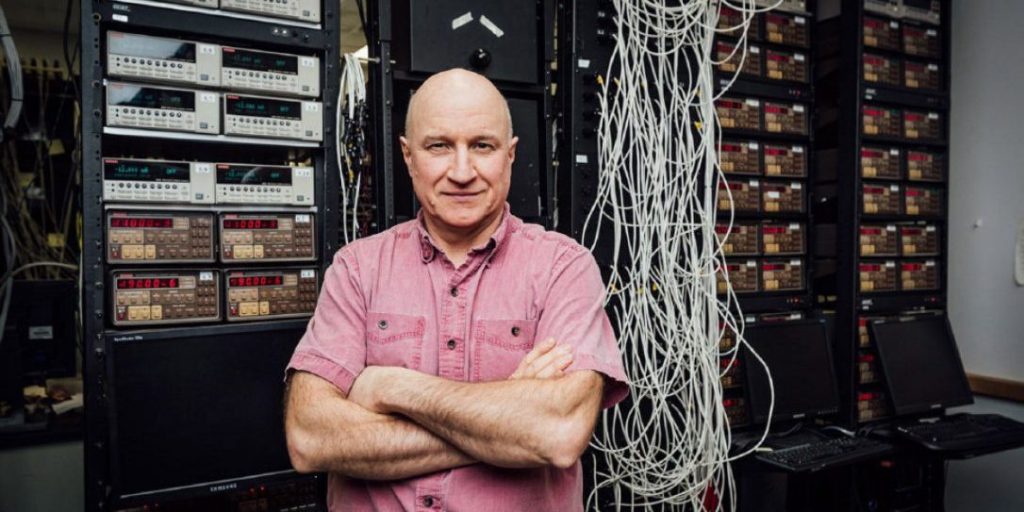- Received the Independent Review of its Phase I report titled “Bonnie Claire Metallurgical Evaluation and Process Development.”
- Delivery of the current Independent Review Report constitutes the conclusion of the Stage 1 Benchmark and calls for the issuance of 2,000,000 of Iconic’s common shares to St-Georges.
- Iconic has also met its other obligations derived from this agreement by participating in St-Georges’ private placement in January 2019 for CAD $100,000.
Montreal, July 24, 2019 – St-Georges Eco-Mining Corp. (CNSX:SX.CN) (OTC:SXOOF) (FSE:85G1) is pleased inform its shareholders that it has received the Independent Review of its Phase I report titled “Bonnie Claire Metallurgical Evaluation and Process Development.” The Company has communicated this information to its client, Iconic Minerals (TSX-V: ICM).
In December 2017, the Company entered into an agreement with Iconic
Minerals ltd that called for St-Georges to develop an extraction process
that would allow Iconic to economically exploit the lithium resources
discovered at Iconic’s 100% owned Bonnie Claire lithium deposit. (For
details, please refer to St-Georges’ Press Release dated December 7,
2017). The agreement has three delivery milestones. The delivery of the
current Independent Review Report constitutes the conclusion of the
Stage 1 Benchmark and calls for the issuance of 2,000,000 of Iconic’s
common shares to St-Georges. Iconic has also met its other obligations
derived from this agreement by participating in St-Georges’ private
placement in January 2019 for CAD $100,000.
St-Georges’ Research & Development Vice-President, Enrico Di Cesare commented: “(…) The development team is
looking forward to progressing the technology further (…) knowing
that the process works and can be independently executed is very
encouraging. We are currently able to leach between 99.97% and 100% of
the lithium in solution (…) the only improvement possible at this
stage is to reduce processing time and the size of the feedstock with
improved concentration. significantly improve what was developed in
Phase I, covered by this report. (…) We are designing the pilot plant
to keep a maximum of flexibility to improve the initial steps of the
process. (…) We are looking forward to the big challenge that putting a
25t/w pilot plant in place represents for us. (…) The reception we
have had from the local communities approached is very positive. People
understand the need to produce lithium at low costs, and they embrace
our commitment to green technology. The government support we have
received until now is beyond what we would have normally expected. (…)
We are now at the stage to increase and formalize our relationships
with higher-learning and public R&D entities. We are hopeful that it
will allow for even more innovation down the road (…)”
Summary of the Report
The objective of the process development by St-Georges Eco-Mining ltd was to recover lithium from the Bonnie Claire deposit.
SGS Lakefield Laboratory performed an elemental analysis and
crystalline analysis of the material that was received. The results
indicated that the lithium was in a spodumene (LiAlSi2O6)
crystal form, and no chlorides were present. This suggests that the
lithium is not the residue of brines from a land-locked salt lake.
Recovery of lithium was tried with water, sulphuric acid,
hydrochloric acid, and mixed acid leaching. All obtained poor results at
room temperature and no pressure. Best results were at higher
temperatures for sulphuric acid, indicating a high-pressure roasting was
required for this material. This is standard for this mineral but not
practical at these concentrations. Sulphuric acid with high temperature,
pressure, and roasting at concentrations of 0.1% lithium or 0.2%
lithium (after air classification) is not practical.
Nitric acid was tried for selective leaching with positive results.
At low temperature and with no pressure, 100% of the lithium was put
into solution while avoiding the leaching of metals and most of the
other elements. Other leached materials were carbonates (1/2 of the
present iron was found under carbonate form) and salts (Mg, Ca including
sodium and lithium). With the expected mined volume of over 7 million
tons annually for 20,000 tons of lithium hydroxide produced, this type
of leaching strategy could help keep capital costs down by, amongst
other things, allowing for the design of a low-cost leach tank.
Concentration methods were tested with early-stage results that call
for further tweaking and calibration. The air classification trials were
able to remove half of the gangue. The report delivered to Iconic
contains a separate independent report in which these tests were
independently performed and validated by Netzsch GmbH. The trials will
be continued with a focus on optimizing de-agglomeration and on crystal
form optimization. Flotation trials were not conclusive at this early
stage. The selective leaching results allowed the Company to plan
additional developments in Phase II. The use of resin for the
purification of the lithium might be pursued on the resulting leached
material and in a parallel extensive test with an electrolysis pilot
plant to be set up to provide the industry with samples for market
acceptance. The latter being a key to funding the project in the future.
Recovery of lithium was also tried with water, sulphuric acid,
hydrochloric acid, and mixed acid leaching. All obtained poor results at
room temperature and no pressure. Best results were at higher
temperatures for sulphuric acid, indicating a high-pressure roasting was
required for this material. This is standard for this mineral but not
practical at these concentrations. Sulphuric acid with high temperature,
pressure, and roasting at concentrations of 0.1% lithium or 0.2%
lithium (after air classification) is not practical.
Testing Results
SGS Lakefield Laboratory was then approached for characterization and
preliminary leaching trials to better determine the strategy for
development and approach going forward, and to get a second opinion on
the crystalline form of the lithium. An independent characterization
report made by SGS Lakefield Laboratory is in Appendix A of the Phase I
report delivered to Iconic.
Table 1: Crystalline Mineral Assemblage (SGS Lakefield)
|
Sample
|
Major
(>30%Wt)
|
Moderate
(10%-30%Wt)
|
Minor
(2%-10%Wt)
|
Trace
(<2%Wt)
|
|
Head Assay
Bulk
|
–
|
potassium-feldspar, plagioclase, quartz, analcime, calcite
|
I/M, illite, mica, heulandite, spodumene
|
*halite, *siderite, *magnetite, *chlorite
|
|
Clay Fraction
|
I/M
|
illite, (quartz), (potassium-feldspar)
|
(heulandite)
|
*chlorite
|
*tentative identification due to low concentrations, diffraction line overlap or poor crystallinity
*I/M – illite-montmorillonite mixture
Brackets indicate non-clay minerals present in the clay fraction.
The presence in clays of spodumene (the most common mineral form of
lithium in hard rock lithium resources) may indicate that it has been
collected over centuries in the dried lake by the erosion of
lithium-bearing hard rock formations as fine clay-sized particles.
Table 2: XRD Crystal Structure (SGS Lakefield)
|
Mineral
|
Head Assay
(wt %)
|
|
Orthoclase
|
25.8
|
|
Albite
|
16.6
|
|
Quartz
|
12.2
|
|
Analcime
|
12.1
|
|
Calcite
|
10.7
|
|
Illite-Montmorillonite
|
5.3
|
|
Phlogopite
|
4.1
|
|
Spodumene
|
3.2
|
|
Illite
|
3.1
|
|
Heulandite
|
2.8
|
|
Halite
|
1.3
|
|
Siderite
|
1.2
|
|
Magnetite
|
1.1
|
|
Clinochlore
|
0.6
|
|
Total
|
100
|
Spodumene represents approximately 3.2% by weight, and typical crystal form is LiAlSi2O6.
Lithium in this crystal form represents 3.7% by total weight. This
correlates closely to the 0.1% lithium readings that have been measured
during resource estimates confirming the crystalline form.
A chemical element distribution was also performed to try to predict
options to create an economical and environmentally viable solution for
the recovery of the resource.
Table 3: Chemical Element Distribution (SGS Lakefield)
|
Name
|
Assay1
|
SQD2
|
Delta
|
Status
|
|
Oxygen
|
40.3
|
47.9
|
-7.55
|
Both
|
|
Silicon
|
25.1
|
26.2
|
-1.08
|
Both
|
|
Aluminum
|
6.35
|
7.09
|
-1.55
|
Both
|
|
Calcium
|
5.08
|
4.44
|
0.64
|
Both
|
|
Potassium
|
4.23
|
4.27
|
-0.03
|
Both
|
|
Sodium
|
3.41
|
3.28
|
0.13
|
Both
|
|
Iron
|
2.24
|
2.13
|
0.11
|
Both
|
|
Carbon
|
–
|
1.41
|
-1.41
|
SQD
|
|
Magnesium
|
1.13
|
1.15
|
-0.02
|
Both
|
|
Chlorine
|
–
|
0.76
|
-0.76
|
SQD
|
|
Hydrogen
|
–
|
0.27
|
0.27
|
SQD
|
|
Fluorine
|
–
|
0.18
|
0.18
|
SQD
|
|
Lithium
|
0.11
|
0.12
|
0.01
|
Both
|
|
Phosphorus
|
0.03
|
–
|
0.03
|
XRF
|
|
Titanium
|
0.22
|
–
|
0.22
|
XRF
|
|
Manganese
|
0.09
|
–
|
0.09
|
SRF
|
1.Values measured by chemical assay.
2.Values calculated based on mineral/compound formulas and quantities identified by semi-quantitative XRD.
The usual form of lithium present in typical brines is easy to
dissolve in water. The common forms of lithium associated with hard rock
resource are spodumene LiAlSi2O6 and lepidolite K(Li,Al,Rb)2(Al,Si)4O10(F,OH)2 which
require aggressive leaching with high temperature and roasting. As the
economic recovery of the lithium would be severely hampered, a leaching
trial was performed at ambient temperature with conventional leaching
options. Initial tests have shown that high temperature and roasting
would be necessary with conventional leaching methods.
Table 4: Summary of Leach Tests
|
Test
| |
Lixiviant
|
Solids
|
Extractions (%)
|
|
Test
|
Sample
|
Temp
|
Lixiviant
|
Li
|
Ca
|
Mg
|
|
L-001
|
NV Clay Comp
|
Amb
|
Water
|
2
| 0 | 0 |
|
L-002
|
NV Clay Comp
|
Amb
|
H2SO4
|
11
|
15
|
8
|
|
L-003
|
NV Clay Comp
|
Amb
|
HCl
|
7
|
92
|
4
|
|
L-004
|
NV Clay Comp
|
80
|
H2SO4
|
15
|
14
|
9
|
|
L-005
|
NV Clay Comp
|
80
|
H2SO4 + Thiourea
|
40
|
16
|
40
|
Water Leach (L-001)
A lithium salt would normally be leached or dissolved in water. L-001
test demonstrates that only 2% of the total lithium was recovered in
solution, and a total of 11% weight loss of the solids occurred. This
indicates that only actual salts were dissolved in the water. A typical
brine would have allowed most of the lithium and salts to be recovered
in water which is noticeably not the case here. A water wash could
reduce the impurities in the solution simplifying the total purification
steps by reducing sodium, for example. Saturated salt water may help
with concentrating lithium fines during froth flotation and may be
achieved by water recirculation.
Sulphuric Acid Leach (L-002, L-004, L-005)
At ambient temperature, test L-002 leached 11% of the lithium. With the temperature at 80?C test L-004 with
15% of the lithium recovered provided the best results with sulphuric
acid. This follows the logic of hard rock lithium minerals chemical
recovering with high temperature pressurized leach after roasting with
conventional methods. Purification and neutralization efforts are costly
even with a 6% total lithium concentrate. At the concentrations being
discussed, the chemical usage and sheer size of the process plant, it
would doubtfully be economical.
Mixed acid was also tried with elements added to the sulphuric acid in test L-005.
At 80?C, this did improve the recovery of lithium to 40% but also
increased other elements not targeted to be leached. Even with mixed
acid, the testing trend indicated high-temperature pressure vessels
would be needed. This would be very costly with low concentrations of
lithium in addition to leaching many impurities that would complicate
the purification steps. The main advantage with sulphuric acid is that
calcium is precipitated as gypsum, thus eliminating one of the
impurities.
Hydrochloric Acid Leach (L-003)
Test L-003 was only a little better than water leach (L-001)
with 7% of the total lithium recovered and almost all the calcium. In
this case, it is expected that increasing the temperature would improve
results, but more impurities would probably be leached at the same time.
Mg and Ca leached at the highest rate with HCl (Ca remains in solution
with HCl).
Magnesium (Mg) and Calcium (Ca) cause problems for the recovery of
lithium with resins and organics. Conventional resins with brines
typically have a ratio of 6 to 1 for Magnesium to Lithium before
efficiency is severely diminished. This has led to the development of
new resins to operate in less favorable ratios. In the case of using
acids, the chemical costs can become prohibitive even if a resin for
purification is found with unfavorable ratios.
St-Georges’ Process: Selective Leaching with Nitric Acid
Leaching with a passivating acid normally used to clean steel and
passivate the welds of stainless steel was performed in the hope of
selectively removing the magnesium (Mg) and all the salt metals like
sodium (Na), calcium (Ca), lithium (Li) and magnesium (Mg).
The initial results with a 4-hour leach showed that all the salt
metals and carbonate formations leached easily. This follows the logic
of cleaning acid and leaves most of the other elements behind, such as
silica (Si), alumina (Ai), potassium (K).
Multiple 1-hour leach tests confirmed the leaching of 100% of
the lithium leaving behind most of the leachable elements from other
acids such as potassium (K). The only loss of lithium that occurred
during some of these tests was due to the water in the filter with the
solids and represented less than 0.03% of the total lithium value. It
also corresponds directly to the water retained with this type of fine
material. Additional trials are being performed with reduced time of
contact and temperature to optimize the lithium-bearing fines leaching.
The lithium in the super fines leached completely in each test
performed with nitric acid. The trials to selectively optimize leaching
the lithium with less calcium and magnesium are expected to be performed
in the third quarter of 2019. It is expected that calcium can be
reduced partially by filtering the coarser calcium formation as per SGS
results and partially with less contact time with the acid. The same for
magnesium. New samples will be treated once received.
Considering the results obtained, St-Georges is working on strategic
partnerships for new organics mediums and resins that can work with
nitric acid to selectively collect the lithium, as well as for
electrolysis with nitric acid mediums. The Company also started to work
on optimizing a new technology related to filter presses to reduce the
facility size and environmental footprint, and to decrease chemicals
usage and waste disposal. The new filter press design will be completed
and available for viewing within two months. It is too early to know if
this development initiative will result in intellectual property that
can be patented.
Yves Caron P.Geo. (OGQ #548) a Qualified Person under the
National Instrument 43-101 has reviewed and approved the technical
content of the current press release
ON BEHALF OF THE BOARD OF DIRECTORS
“Vilhjalmur Thor Vilhjalmson”
VILHJALMUR THOR VILHJALMSON, PRESIDENT
About St-Georges
St-Georges is developing new technologies to solve some of the most common environmental problems in the mining industry.
The Company controls directly or indirectly, through rights of first
refusal, all of the active mineral tenures in Iceland. It also explores
for nickel on the Julie Nickel Project & for industrial minerals on
Quebec’s North Shore and for lithium and rare metals in Northern Quebec
and in the Abitibi region. Headquartered in Montreal, St-Georges’ stock
is listed on the CSE under the symbol SX, on the US OTC under the Symbol
SXOOF, and on the Frankfurt Stock Exchange under the symbol 85G1.
Cautionary Statements Regarding Forward-Looking Information
Certain statements included herein may constitute
“forward-looking statements.” All statements included in this press
release that address future events, conditions, or results, including in
connection with the prefeasibility study, its financing, job creation,
the investments to complete the project and the potential performance,
production, and environmental footprint of the ferrosilicon plant, are
forward-looking statements. These forward-looking statements can be
identified by the use of words such as “may”, “must”, “plan”, “believe”,
“expect”, “estimate”, “think”, “continue”, “should”, “will”, “could”,
“intend”, “anticipate”, or “future”, or the negative forms thereof or
similar variations. These forward-looking statements are based on
certain assumptions and analyses made by management in light of their
experiences and their perception of historical trends, current
conditions, and expected future developments, as well as other factors
they believe are appropriate in the circumstances. These statements are
subject to risks, uncertainties, and assumptions, including those
mentioned in the Corporation’s continuous disclosure documents, which
can be found under its profile on SEDAR (www.sedar.com).
Many of such risks and uncertainties are outside the control of the
Corporation and could cause actual results to differ materially from
those expressed or implied by such forward-looking statements. In making
such forward-looking statements, management has relied upon a number of
material factors and assumptions, on the basis of currently available
information, for which there is no insurance that such information will
prove accurate. All forward-looking statements are expressly qualified
in their entirety by the cautionary statements set forth above. The
Corporation is under no obligation, and expressly disclaims any
intention or obligation, to update or revise any forward-looking
statements, whether as a result of new information, future events or otherwise, except as expressly required by applicable law.
Neither the CSE nor its Regulation Services Provider accept responsibility for the adequacy or accuracy of this release.














